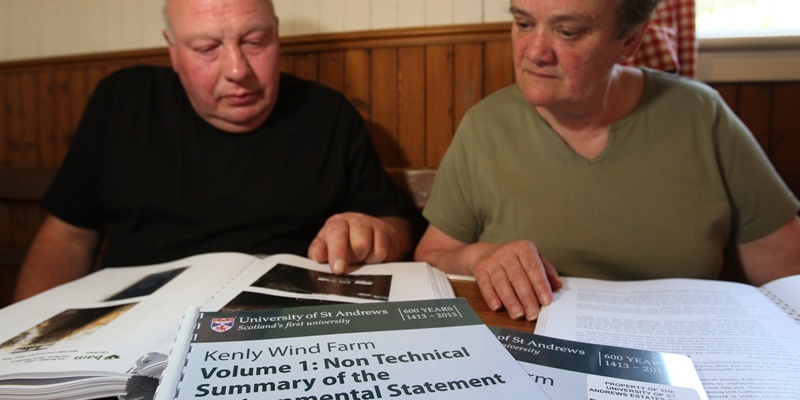Plans by St Andrews University to build its own wind farm are being laid out for public scrutiny.
The institution hopes to build a six-turbine, 12 megawatt wind farm on land at Kenly Farm in a bid, it says, to protect itself from “rapidly rising and punitive” energy bills.
The plans were put on display at the nearby Boarhills village hall on Tuesday. The display moves on to the Kingsbarns Memorial hall today from 4-6pm.
Senior university officials insist it is the only way to ensure the institution can continue to “determine its own financial fate.”
Spiralling energy costs have seen the university’s bills triple since 2005 to an eye-watering total of £5.4 million a year.
The decision to seek planning permission comes in the wake of a three-year research programme which included consultation with representatives of communities in Boarhills, Dunino and Kingsbarns.
The officials insist the wind farm represents a “vital component” of the institution’s strategy to tackle rocketing energy bills.
“The tripling of bills since 2005 is equivalent to the salaries of up to 120 full-time staff at St Andrews and is a major financial risk for us,” said quaestor and factor Derek Watson.
“Doing nothing is not an option. We would prefer to determine our own financial fate than have it determined for us by the vagaries of international energy markets.”
Mr Watson pointed out that the university had already taken steps to limit its energy consumption.
“Our consumption is on a flat line but we are being charged more and more for it,” he said.
The university is hopping for a positive response to the application and clearly believes it is consistent with the government’s aim to cut emissions across the country.
“We are encouraged by the Scottish Government’s commitment to renewables and fortunate that we can respond positively to it,” Mr Watson added.
It is envisaged that the wind farm would feed electricity through underground cables into the national grid, generating a substantial income for the university.
An official figure has not been given but it has been estimated that each turbine could raise over £50,000 per year. A percentage of the total would be invested into local community funds.
